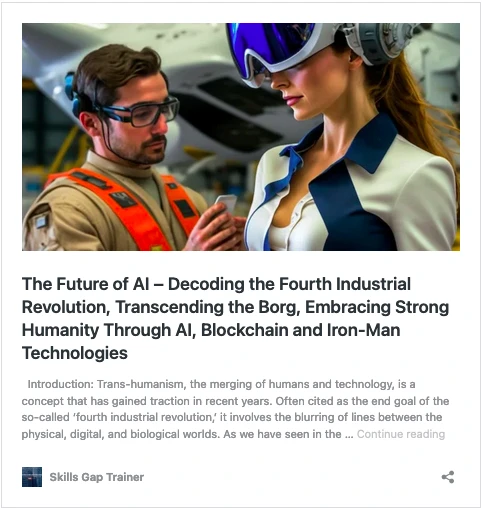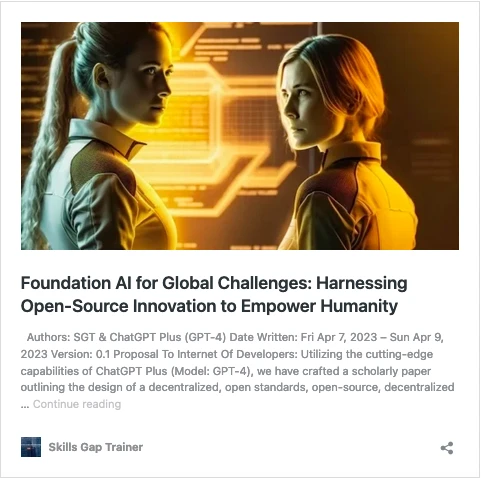Introduction:
As we venture deeper into the era of accelerated technological evolution, the advent of artificial intelligence (AI) has surfaced as a paradigm-shifting force, wielding both unparalleled potential and formidable challenges. This emergence has brought forth the “AI Dilemma”, the intricate quest to harmonize the dual pursuits of technological innovation and safety. In this seminal paper, we invite you on a riveting exploration of the “AI Dilemma”, illuminating its pervasive implications and proposing robust solutions to optimize the bounty of benefits while mitigating the inherent risks.

Our voyage commences with an exploration of AI’s burgeoning influence and the societal impact of large language models. We unravel the complex tapestry of potential risks, ethical quandaries, and privacy concerns these advancements present. We cast a discerning eye on the global competitive landscape, primarily focusing on AI powerhouses such as the US and China, highlighting the critical need for proactive engagement to avoid the pitfalls witnessed in the hasty adoption of social media.

Drawing wisdom from historical precedents, we chart a course towards a range of innovative solutions and strategies designed to successfully navigate the “AI Dilemma”. These include the implementation of “Know Your Customer (KYC)” policies for AI access, the attribution of liability to AI model creators, and the encouragement of international cooperation and public-private partnerships. We delve into the revolutionary potential of blockchain control mechanisms and decentralized open-source AI networks, championing these as invaluable tools to bolster AI safety, enhance transparency, and uphold ethical standards.

As we reach the culmination of this enlightening journey, we amplify a resounding call to action. We accentuate the paramount importance of fostering a culture of open dialogue, rigorous research, and coordinated efforts to confront the “AI Dilemma” effectively. We advocate for the inclusion of diverse perspectives and a comprehensive, multi-disciplinary approach to AI safety and regulation. Furthermore, we explore the transformative potential of AI in catalyzing medical breakthroughs, pioneering environmental solutions, and driving societal advancements.

Join us on this compelling voyage as we dissect the “AI Dilemma”, unraveling the intricate interplay between AI innovation and its vast societal implications. Prepare to be enthralled, enlightened, and engaged as we traverse this critical exploration of humanity’s future in the exhilarating age of AI.

TABLE OF CONTENTS
I. Understanding the AI Dilemma
A. The growing influence of AI and large language models on society
B. Potential risks and challenges posed by AI, including privacy, safety, and ethical concerns
C. The competitive landscape between countries like the US and China in AI development
D. The urgency to act and address the AI Dilemma to avoid repeating mistakes made with social media
II. Lessons from the Past: The Social Media Precedent
A. The unforeseen consequences of rapid technology adoption and entanglement with society
B. The need for proactive measures to prevent potential harm and unintended consequences
III. Proposed Solutions and Strategies for Navigating the AI Dilemma
A. Implementing Know Your Customer (KYC) policies for AI access
B. Imposing liability on creators of AI models for any harm resulting from leaks or misuse
C. Encouraging international cooperation and public-private partnerships
D. Developing responsible practices for AI development and deployment
E. Blockchain Control Mechanisms for AI Safety
– Decentralized Open-Source AI Networks
– On-Chain Governance for AI Safety
– AI Ethics and Transparency Framework
– Safety Audits and Certification
– AI Emergency Response Mechanism
IV. The Road Ahead: A Call to Action
A. The importance of engaging in discussions, research, and coordination to address the AI Dilemma
B. The need for diverse perspectives and a comprehensive approach to AI safety and regulation
C. The potential for AI to contribute to medical discoveries, environmental solutions, and societal advancements
I. Understanding the AI Dilemma
A. The Expanding Influence of AI and Large Language Models on Society:
We find ourselves amidst an AI renaissance, where artificial intelligence and large language models are becoming ubiquitous, indelibly reshaping the contours of society across various sectors, from communication and commerce to education and healthcare. Such rapid technological strides have empowered these models to shoulder tasks traditionally exclusive to humans, unlocking unprecedented levels of efficiency, personalization, and convenience.

Our communication landscape and information ecosystem have been radically transformed by large language models like GPT-4. These models have given rise to AI-powered chatbots and virtual assistants capable of engaging in increasingly sophisticated, human-like dialogue. In doing so, they have streamlined customer support, enhanced workplace productivity, and democratized access to information and services through seamless language translation, thereby transcending geographic and linguistic barriers.

Furthermore, the advent of advanced AI algorithms has revolutionized our online experiences, tailoring them to our unique preferences. Through the analysis of vast swathes of data, these algorithms provide highly customized user experiences, from curating personalized content recommendations on streaming platforms to displaying targeted advertising on social media. The same logic applies to decision-making tools powered by AI, which are now ubiquitously employed across a wide array of industries, such as finance and healthcare, optimizing processes, and driving improved outcomes.
In the realm of education and skills development, AI has emerged as a potent force. AI-powered platforms offer personalized learning experiences, adaptive assessment tools, and virtual tutoring, thus propelling the democratization of education. These innovations aim to bridge the skills gap by providing learners with resources tailored to their unique learning styles and abilities.

However, this seismic shift towards AI has its own set of ethical implications and potential unintended consequences. As AI’s influence permeates the societal fabric, it brings forth critical concerns about privacy, surveillance, and the potential misuse of AI-generated content for spreading misinformation or reinforcing harmful biases. The escalating reliance on AI systems has also sparked debates about the impact of automation on employment and the potential exacerbation of income inequality.

The burgeoning influence of AI and large language models underscores the pressing need for a thoughtful, proactive approach to tackle the challenges and risks inherent to these technologies. Recognizing and addressing these potential ramifications allows us to responsibly harness the transformative power of AI, improving lives while ensuring our values and well-being remain at the forefront in an increasingly AI-driven society.

B. Potential risks and challenges posed by AI, including privacy, safety, and ethical concerns
The transformational nature of artificial intelligence and large language models has opened up vistas of innovation and societal progress. Yet, as we continue to weave these powerful technologies into the very fabric of our lives, we are also confronted with a variety of risks and challenges. It is essential that we remain mindful of these potential pitfalls, particularly those pertaining to privacy, safety, and ethics, so as to ensure a balanced and conscientious development of AI.
The advent of AI-driven data collection and analysis has given rise to hitherto unseen degrees of surveillance and monitoring. This has inevitably kindled concerns about individual privacy. For instance, facial recognition technology, which is increasingly being employed by governments and private entities alike, has the potential to infringe upon our rights to privacy and anonymity. Similarly, AI-powered algorithms that process personal data for purposes such as targeted advertising and personalization have ignited debates around the issues of data privacy and informed consent.
Simultaneously, the safety concerns stemming from AI-generated content are becoming increasingly significant. Deepfakes, misinformation, and other forms of misleading or malevolent content, when disseminated widely, can have far-reaching social, political, and economic repercussions. Furthermore, the ability of large language models to produce realistic and convincing content raises the specter of AI-generated content being weaponized, leading to cyberbullying, harassment, or even the propagation of extremist ideologies.
Equally important are the ethical implications and biases inherent in AI systems. These systems are fundamentally shaped by the data they are trained on. If this data is reflective of societal biases, these biases may become entrenched and even amplified by AI algorithms. This can result in prejudiced decision-making in crucial areas such as hiring, lending, and healthcare. Ensuring that AI systems conform to human values and ethics is a key challenge in the development of AI technology.
The global scramble for AI dominance has also heightened concerns about the potential for unregulated or irresponsible deployment of AI technologies. This race, most notably between the United States and China, could undermine international cooperation on AI safety and ethics. It is essential, in the pursuit of AI supremacy, to prioritize safety and responsible development to prevent unintended consequences and maintain a competitive advantage without sacrificing ethical considerations.
Lastly, the rise of AI and the corresponding increase in automation bring into sharp focus the questions surrounding the future of work and income inequality. As we navigate this evolving landscape, it is crucial to invest in education and skill development to prepare individuals for the shifting job market and ensure that the benefits of AI are distributed equitably throughout society.
Addressing the myriad risks and challenges posed by AI necessitates a united effort from governments, industry leaders, and researchers. It is only through the development of ethical guidelines, safety regulations, and robust frameworks for responsible AI development that we can hope to strike a balance between technological innovation and safety. By engaging in thoughtful dialogue and proactive action, we can negotiate the challenges of the AI era.
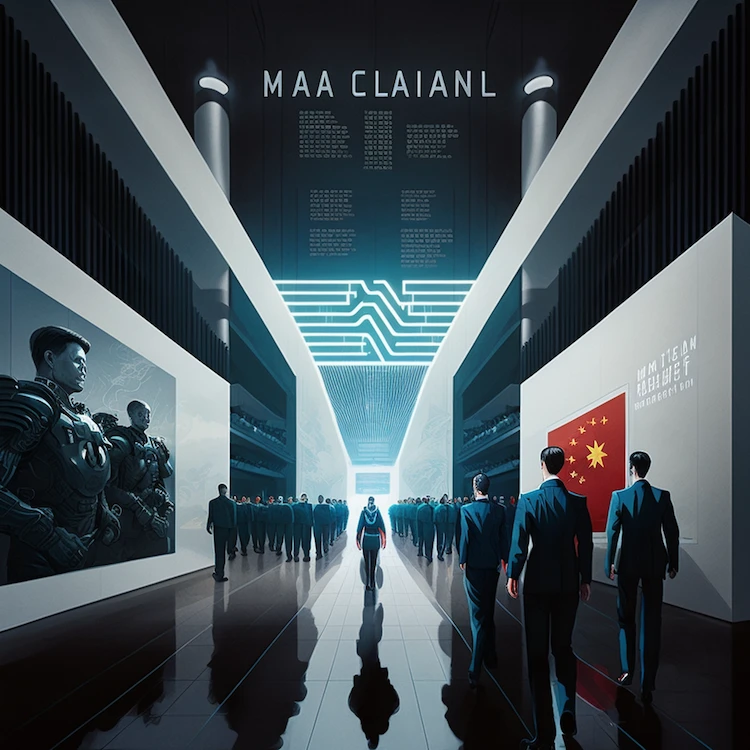
C. The competitive landscape between countries like the US and China in AI development
Artificial intelligence is revolutionizing industries and recasting the global economy, leading to a heightened competitive landscape between nations, particularly the United States and China. These two powers are locked in a fierce contest for AI supremacy, each aiming to eclipse the other in innovation, investment, and deployment. Grasping the dynamics of this rivalry is essential to navigate the AI conundrum and foster a responsible approach to AI development.
Historically, the United States has been the vanguard of AI research and development. Its supremacy has been sustained by a robust ecosystem of technology firms, academic institutions, and a culture that champions innovation. The American commitment to open-source AI models has further fortified its position, allowing researchers globally to access and build upon the most recent advancements in the field.
Meanwhile, China has ascended rapidly as a formidable player in AI. The Chinese government’s substantial investments in AI research, infrastructure, and talent acquisition signal its lofty ambitions. As per the country’s AI Development Plan, China aims to become the global leader in AI by 2030. China’s centralized AI development strategy, coupled with its expansive market and data resources, has facilitated significant progress in domains such as facial recognition, natural language processing, and autonomous vehicles.
The AI race between the U.S. and China has mixed implications. On one side, this rivalry stokes innovation and expedites the evolution of AI technologies, potentially culminating in breakthroughs that enrich humanity. On the flip side, it can amplify geopolitical tensions and undercut international cooperation on AI safety and ethics.
As the tussle for AI supremacy intensifies, it becomes imperative to prioritize safety and responsible development. Unfettered or reckless deployment of AI technologies can lead to perilous outcomes, ranging from breaches of privacy to the weaponization of AI-generated content. Moreover, a rushed race to deploy AI technologies can result in inadequately tested or improperly secured systems, heightening the risk of mishaps or misuse.
To temper the risks inherent in the competitive landscape, it is crucial to cultivate international collaboration on AI development, safety, and ethics. A united front can establish shared norms, best practices, and regulatory frameworks that encourage responsible AI innovation. This collective approach can help balance the benefits of AI advancement with the need to address its potential hazards.
In sum, the competitive landscape in AI development, especially between nations like the US and China, underscores the necessity for a cautious equilibrium between innovation and safety. By encouraging international collaboration, prioritizing responsible development, and confronting the risks and challenges associated with AI, we can navigate the AI impasse and harness the transformative potential of this technology for the betterment of society.

D. The urgency to act and address the AI Dilemma to avoid repeating mistakes made with social media
The escalating power and influence of AI necessitate an urgent response to the AI predicament. Drawing lessons from the social media saga, we must act swiftly and proactively to ensure that AI technologies are devised and implemented responsibly, ethically, and with an acute awareness of their lasting societal implications.
The social media whirlwind altered our communication, information-sharing, and social interactions dramatically. However, its meteoric rise, coupled with a lack of foresight into potential adverse effects, led to significant challenges including misinformation, privacy breaches, and threats to mental well-being. As we traverse the AI landscape, it becomes imperative to draw from these experiences and adopt a more deliberate approach to the creation and application of AI technologies.
Avoiding the social media pitfalls in AI development demands that AI stakeholders embrace proactive measures to promote responsible growth. This involves rigorous safety evaluations, the establishment of ethical guidelines, and fostering open dialogues about the potential risks and challenges tied to AI technologies. Confronting these issues directly can help mitigate potential harm and ensure that AI progresses in a manner that universally benefits society.
A cornerstone of navigating the AI predicament lies in cultivating a culture of responsibility and collaboration among AI researchers, developers, policymakers, and other stakeholders. This requires constructing platforms for transparent dialogue and cooperation, disseminating best practices, and framing regulatory guidelines that advocate safety and ethical considerations in AI development. A united front can engender a comprehensive approach to AI development that harmoniously blends innovation, safety, and ethical concerns.
Technologists, as the architects of the AI future, bear a significant responsibility. Their role extends beyond crafting new technologies to deciphering a new suite of responsibilities, fashioning the language, philosophy, and legalities that will guide responsible AI development. By actively participating in addressing the AI predicament, technologists can shape AI technologies that align with societal interests.
Addressing the AI predicament demands collective action. As AI continues to evolve and permeate our daily lives, it becomes a shared responsibility to navigate the challenges and opportunities it presents. In doing so, we can sidestep the pitfalls encountered with social media and pave the way for a future where AI technologies are wielded responsibly for collective advantage.
In closing, the need to act swiftly and address the AI predicament is evident. By heeding the lessons from the social media experience and adopting a proactive, collaborative stance towards AI development, we can ensure that AI technologies are devised and implemented responsibly, ethically, and with a vision of long-term societal impact. This united effort is crucial in navigating the exhilarating yet daunting journey into our AI-dominated future.
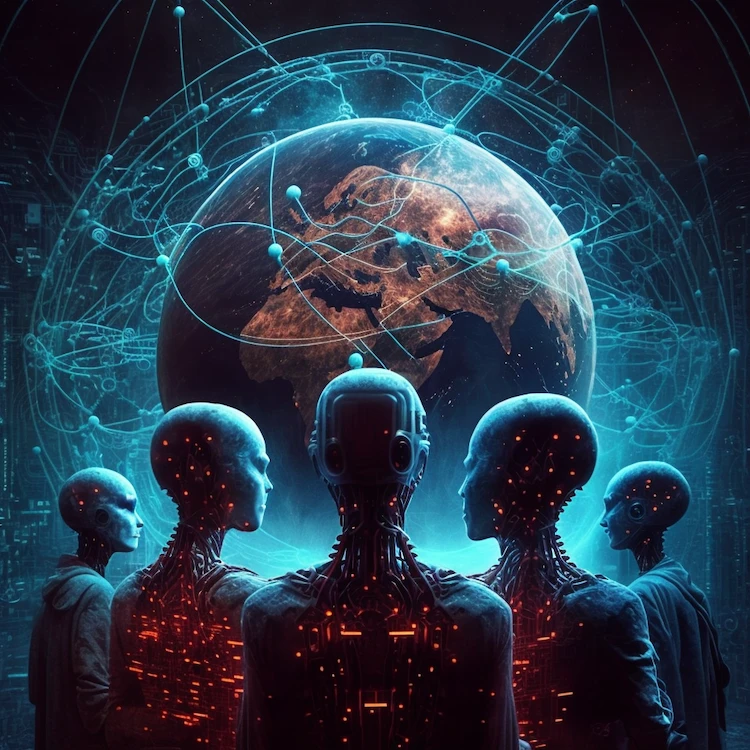
II. Lessons from the Past: The Social Media Precedent
A. The unforeseen consequences of rapid technology adoption and entanglement with society
As we stand on the cusp of an AI-dominated era, it becomes pivotal to acknowledge the potential unanticipated repercussions of rapid technology adoption and its intricate interweaving with society. A deep dive into the lessons from past technological breakthroughs offers a compass, guiding us through the labyrinthine dynamics that AI will inevitably introduce.
The embrace of technology is a double-edged sword, offering a plethora of benefits such as heightened efficiency, unprecedented convenience, and a world of information at our fingertips, while simultaneously ushering in unique challenges. Take, for instance, the meteoric rise of social media platforms, which, while revolutionizing communication, also bred concerns around misinformation, privacy breaches, and mental health. In the same vein, AI, with its power to both uplift and disrupt, underscores the necessity for a delicate equilibrium between innovation and safety.
The depth of technology’s entanglement with society implies that the ramifications of AI will ripple through all aspects of our lives, transforming communication, entertainment, healthcare, and education, to name a few. This amplifies the need to meticulously examine the potential impacts, both foreseen and unforeseen, of AI on our collective existence.
The breathtaking speed of AI development often outpaces our capacity to fully grasp the potential risks and challenges in its wake. As AI systems gain sophistication, they may catalyze novel ethical quandaries, privacy dilemmas, and safety hazards that lie outside our current experience. This unpredictability underlines the exigency for a judicious and reflective approach towards AI development and deployment.
The lens of past experiences, such as the unintended consequences of social media, offers invaluable insights into the potential pitfalls that rapid AI adoption might stumble upon. By identifying and learning from these past narratives, we can construct a strategy to circumvent similar issues with AI, thereby ensuring a harmonious balance between innovation, safety, and ethical considerations.
As we prepare for an AI-centric future, it is vital to foster proactive planning and collaboration among all stakeholders to address the unanticipated repercussions of AI’s intertwining with society. This involves strategic risk anticipation, the formulation of ethical directives, and the implementation of safety protocols to mitigate harm. Cultivating a culture of responsibility and cooperation, we can effectively navigate the labyrinth of challenges and opportunities presented by AI technologies.
In essence, the unexpected consequences of swift AI adoption and its immersion in society underscore the importance of striking a balance between innovation and safety. By heeding the lessons from the past and adopting proactive measures, we can facilitate the responsible development and deployment of AI technologies, maximizing societal benefits while minimizing potential risks and challenges.

B. The need for proactive measures to prevent potential harm and unintended consequences
As the tendrils of AI technologies weave themselves more intricately into the fabric of society, the necessity for preemptive action to forestall potential harm and unintended fallout becomes paramount. This calls for a comprehensive approach, one that rallies stakeholders across academia, industry, and government in a concerted effort towards responsible AI development and deployment.
The establishment of ethical roadmaps and best practices is a crucial first step. This involves the creation of frameworks imbued with principles of fairness, accountability, transparency, and privacy. Such guiding principles serve as a compass for researchers, developers, and policymakers, ensuring AI technologies evolve in a manner consonant with societal values and with an eye towards harm minimization.
As AI systems amass more power, a relentless focus on enhancing safety and security becomes vital. Investment in research and development must pivot towards robustness, explainability, and verifiability, ensuring that AI systems remain resilient in the face of adversarial attacks, remain comprehensible to human users, and behave predictably across a variety of contexts.
Collaboration and information sharing form another cornerstone of this approach. By fostering a culture of exchange among AI researchers and developers, we can collectively identify potential risks and co-create effective mitigation strategies. This could be achieved through forums, workshops, and conferences that stimulate the exchange of ideas and foster a collective sense of responsibility towards the safe evolution and deployment of AI technologies.
Regulatory frameworks and oversight mechanisms are indispensable in holding AI developers and users accountable for the repercussions of their technologies. This involves setting stringent standards, crafting legislation, and establishing regulatory bodies that maintain a vigilant watch over compliance with ethical and safety guidelines.
Public awareness and education form the backbone of informed discourse and decision-making around AI. By fostering an understanding of AI technologies and their potential implications through educational resources, public debates, and responsible media coverage, we can paint a balanced picture of AI’s benefits and risks.
Industry responsibility is another key pillar. Encouraging companies to shoulder the potential impacts of their AI technologies can instill ethical and safety-conscious development practices. Initiatives such as corporate social responsibility programs, internal guidelines, and regular risk assessments can guide industry players towards more responsible AI development.
In conclusion, proactive measures form an integral part of navigating the AI conundrum. By weaving together collaboration, ethical guidelines, enhanced safety, public awareness, and industry responsibility, we can ensure that AI technologies evolve in a manner that magnifies benefits while diminishing risks. This holistic approach will empower us to tap into AI’s transformative potential, while erecting safeguards against potential harm.
III. Proposed Solutions and Strategies for Navigating the AI Dilemma

Implementing Know Your Customer (KYC) policies for AI access
In an era where AI technologies are surging in power and ubiquity, the call for responsible access and usage rings loud and clear. One promising avenue for ensuring ethical and safe AI utilization lies in the implementation of Know Your Customer (KYC) policies, traditionally used in finance, for AI access. These KYC protocols stand as gatekeepers, controlling AI deployment and curtailing potential misuse through comprehensive user verification.
The bedrock of an effective KYC policy is a thorough verification process. This process mandates that individuals and organizations desiring access to AI technologies pass through rigorous checks. These checks may encompass collecting and verifying identification documents, a deep-dive into the potential user’s background, and a meticulous evaluation of their intended AI application. By employing diligent scrutiny, technology providers can illuminate who is accessing their systems and for what exact purpose.
KYC policies also play a critical role in upholding legal and regulatory standards, such as anti-money laundering (AML) and counter-terrorism financing (CTF) regulations. As we unravel the identities and intentions of potential users, technology providers can thwart unauthorized access to AI systems that may otherwise find their way into illegal or harmful applications.
Moreover, KYC policies are instrumental in fostering a culture of responsible AI usage. Through user verification and intent understanding, we can cultivate a community of AI practitioners who are committed to the principles of ethical and safe deployment. This approach can effectively mitigate the perils associated with reckless or malicious AI usage.
A vital benefit of employing KYC strategies is the minimization of AI proliferation risk. By confining access to advanced AI technologies to users who have been verified and deemed responsible, we can stave off the unintentional diffusion of AI capabilities into the hands of nefarious actors or those lacking the technical acumen to handle these technologies safely.
Finally, KYC policies serve as trust builders and transparency enhancers within the AI ecosystem. By instituting a standardized process for user verification, technology providers can broadcast their dedication to responsible AI deployment, thus reducing the probability of misuse.
In essence, the implementation of Know Your Customer policies for AI access marks a pivotal stride towards harmonizing innovation with safety in the AI age. By erecting a robust verification edifice, assuring legal and regulatory compliance, and nurturing responsible AI usage, we can mitigate potential risks and pave the way for a more ethical and secure AI landscape.

B. Imposing liability on creators of AI models for any harm resulting from leaks or misuse
As the footprint of AI systems widens, so does our apprehension about the potential hazards and unforeseen consequences. A potent approach to assuage these concerns lies in attributing liability to AI model creators for any harm emanating from leaks or misuse of their innovations. This practice not only ensures developers bear responsibility for the potential fallout of their creations but also incentivizes the birth of a more accountable AI ecosystem.
Instilling greater accountability is a byproduct of imposing liability on AI creators. This measure urges developers to wrap their AI creations in more robust security measures and exercise heightened vigilance during deployment. The result is a safer fleet of AI systems and an AI development community imbued with a culture of responsibility and accountability.
The specter of liability also serves as a powerful deterrent. Developers, aware of the consequences, will think twice before creating AI systems susceptible to abuse or misuse. This cautionary effect helps reduce the influx of potentially harmful AI models into the market, thus curbing the risk of unintended negative fallout.
Moreover, attributing liability to AI creators furnishes victims of AI misuse or leaks with a means to seek restitution. Those bearing the brunt of the negative repercussions of AI deployment have a pathway to compensation, contributing to a more equitable AI landscape.
The threat of liability also fuels the drive for responsible development. Faced with the possibility of being held accountable for harm, AI creators are motivated to prioritize the creation of AI systems that are resilient to misuse and unexpected outcomes, and that align with ethical norms and guidelines.
A key benefit of imposing liability on AI creators is the equilibrium it establishes between innovation and safety. By holding developers answerable for the potential fallout of their creations, we can foster an AI ecosystem that continues to evolve, while ensuring that safety and ethical quandaries are duly addressed.
To sum up, imposing liability on AI model creators for any harm resulting from leaks or misuse stands as a vital safeguard against the potential risks tied to AI development. By cultivating a culture of accountability, deterring the creation of potentially harmful AI, providing victims with a means to seek compensation, encouraging responsible development, and striking a balance between innovation and safety, we pave the way for a more accountable and secure AI landscape.

C. Encouraging international cooperation and public-private partnerships
As we navigate the labyrinth of the AI dilemma, striving to strike a balance between trailblazing innovation and necessary safety, the call for international cooperation and public-private partnerships becomes increasingly critical. By sowing the seeds of collaboration among diverse stakeholders, we can orchestrate a harmonized approach to tackle the challenges tossed up by AI and synchronize our efforts towards achieving shared objectives.
Fostering a climate of international cooperation and public-private partnerships paves the way for the free flow of knowledge, resources, and expertise. By pooling our collective wisdom and resources, countries and organizations can devise more potent strategies to manage the risks inherent in AI and foster responsible innovation.
This spirit of collaboration can also catalyze the development of universal standards and guidelines for AI deployment. These shared principles, born out of collective intelligence, can act as a beacon, ensuring that AI systems across the globe adhere to ethical norms, respect human rights, and prioritize safety, irrespective of their origin or area of deployment.
Harmonizing regulatory efforts also becomes more feasible with international cooperation. A consistent approach to governing the potential risks and rewards of AI technologies prevents regulatory arbitrage and holds all players to the same high bar of standards, maintaining a level playing field.
Public-private partnerships can stimulate joint research initiatives that serve as crucibles for AI safety and responsibility. By pooling their intellectual resources, researchers from the public and private sectors can confront the intricate challenges posed by AI head-on, fueling innovation that aligns with societal values and ethical considerations.
Further, international cooperation and collaboration among organizations can bolster global competitiveness in the AI landscape. By learning from each other and leveraging collective strengths, nations can drive innovation and ensure the development and deployment of AI technologies is done in a manner that is beneficial to humanity at large.
To conclude, the call to encourage international cooperation and public-private partnerships is a pivotal chapter in the story of navigating the AI dilemma. By championing collaboration, we can jointly address the challenges AI presents, establish shared standards and guidelines, synchronize our regulatory efforts, and promote responsible innovation. Through these collaborative endeavors, we can harness the potential of AI to benefit humanity while minimizing the risks and unintended consequences lurking in the shadows.

D. Developing responsible practices for AI development and deployment
As we navigate the treacherous waters of the AI age, juggling the twin imperatives of innovation and safety, the compass that can guide us safely to shore is the development and deployment of responsible AI practices. Adherence to these practices will ensure that our AI creations are conceived and brought to life in a manner that respects the sacred tenets of ethics, human rights, and safety.
The bedrock of responsible AI is the twin pillars of transparency and explainability. AI architects must focus on ensuring that their creations can be understood by users, demystifying the decision-making processes of AI models. A transparent and interpretable AI not only mitigates the risks of biased or unethical decision-making but also forges a strong bond of trust with its users.
Robustness and security form another crucial facet of responsible AI development. Like a fortress that stands impregnable against the onslaught of adversarial attacks and the unpredictable whims of fate, AI systems must be built with a relentless focus on security. Rigorous testing and validation of AI models ensure their unwavering performance, even when the carpet of predictability is pulled out from under their feet.
With AI systems feasting on a veritable banquet of data, the principles of privacy and data protection must be enshrined in their design. Implementing robust encryption, adopting anonymization techniques, and employing privacy-preserving methods are non-negotiables in the quest to safeguard user data and minimize the risk of data breaches or misuse.
In the grand theatre of AI development, ethics cannot be a silent spectator but must take center stage. Developers must grapple with the ethical implications of their AI systems from the outset, ensuring that their creations respect societal values and human rights. Embedding ethical considerations into the DNA of AI systems can help preempt and mitigate the risks associated with AI technologies, promoting their responsible use.
Responsible AI development also calls for a chorus of diverse voices. A range of stakeholders, from end-users to policymakers, from ethicists to data scientists, must be invited to the table. The result is a symphony of perspectives that ensures AI systems cater to the needs of all users, regardless of their background or expertise.
The journey of an AI system does not end with its creation; it is a continuous cycle of monitoring and improvement. As the landscape changes and new information emerges, developers must be willing to reassess and refine their AI models. A vigilant organization will also have processes in place for ongoing risk assessment and mitigation, ensuring their AI systems remain true to their promise of responsibility.
In conclusion, developing responsible practices for AI development and deployment is not just a nice-to-have; it is an imperative. Through transparency, security, privacy, ethical considerations, inclusivity, and continuous improvement, we can ensure our AI systems serve humanity responsibly, mitigating the risks they pose while maximizing their potential for good.
E. Blockchain Control Mechanisms for AI Safety

Decentralized Open-Source AI Networks
Harness the power of decentralized open-source AI networks by combining blockchain and AI technologies to ensure security, transparency, and community-driven innovation. A decentralized AI network built on Bitcon, Ethereum, Cardano and possibly (Hashgraph and Algorand)* can provide a robust foundation for AI services while maintaining a high level of safety and control.
In the age of AI, decentralized open-source networks offer a promising alternative to traditional centralized models. By merging blockchain and AI technologies, we can create a secure, transparent, and community-driven ecosystem that empowers humanity to harness AI’s potential while mitigating risks. Cardano-based decentralized AI applications, such as the one we designed in “Foundation AI for Global Challenges,” can ensure safety and control through innovative blockchain mechanisms.

1. Bitcoin is the first and the most well-known cryptocurrency, and it operates on a proof-of-work blockchain. Bitcoin’s primary purpose is to serve as a decentralized digital currency, and it is not designed to support complex applications like Ethereum, Cardano, or Hedera Hashgraph.
Bitcoin’s blockchain is not designed to execute smart contracts or host decentralized applications (dApps). It primarily serves as a decentralized ledger for recording transactions of the Bitcoin cryptocurrency. This makes it unsuitable for hosting or interacting with a complex AI model such as GPT-4 directly on-chain.
The Lightning Network, on the other hand, is a “layer 2” solution built on top of the Bitcoin blockchain. It’s designed to enable fast, low-cost transactions by creating off-chain payment channels between parties. While this greatly enhances Bitcoin’s capacity for handling transactions, it doesn’t fundamentally change Bitcoin’s capabilities in terms of hosting applications or executing smart contracts.
In terms of computing power, the Bitcoin network is one of the most powerful networks in the world due to the massive amount of computational power used in mining. However, this power is used for maintaining the blockchain and securing transactions, not for general-purpose computing tasks. Using this power for tasks like training or running an AI model would require a fundamental redesign of Bitcoin’s architecture and consensus mechanism.
From a security standpoint, Bitcoin is highly secure due to its decentralized design and the large amount of computational power required to attack it. The Lightning Network, being a newer and less tested technology, may have potential security issues that are still being explored and addressed. However, neither of these networks is designed to handle the kind of sensitive data that would be involved in training an AI model.
In conclusion, while Bitcoin and the Lightning Network provide a secure and increasingly scalable platform for cryptocurrency transactions, they are not designed to support complex applications like AI training and inference. Other platforms that support smart contracts and decentralized applications, like Ethereum or Cardano, would likely be more suitable for such purposes, though they would still face significant technical challenges.
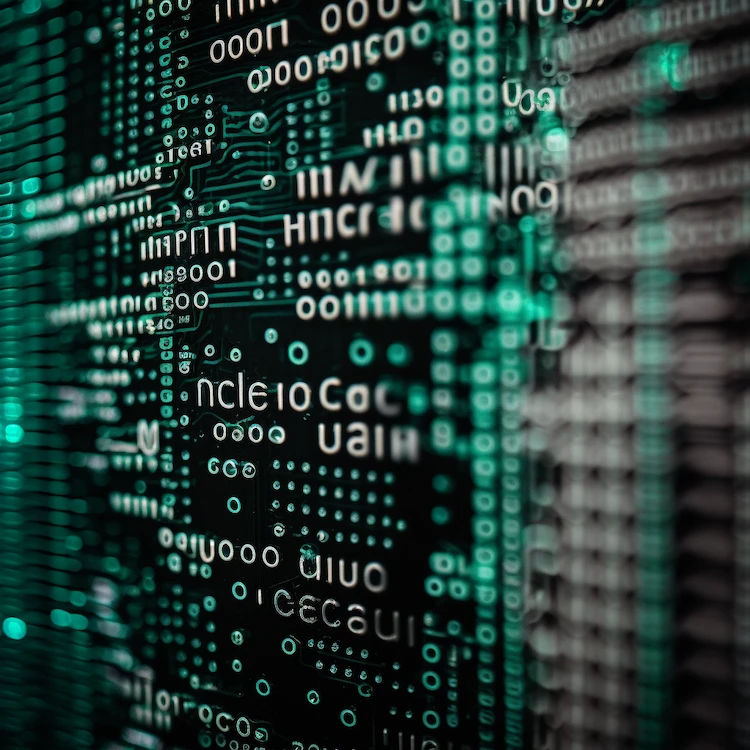
Ethereum is a decentralized, open-source blockchain that supports smart contracts. It uses a proof-of-work consensus algorithm, though it is in the process of transitioning to proof-of-stake with Ethereum 2.0. Ethereum’s native cryptocurrency is Ether (ETH).
Ethereum’s main strength is its Turing-complete scripting language, which allows developers to write complex smart contracts and build decentralized applications (dApps) on the Ethereum platform. These applications can interact with each other, creating an ecosystem of apps that leverage each other’s capabilities.
An AI model like GPT-4 can run on Ethereum, but there are several challenges:
– Computational Resources: Training an AI model requires significant computational resources. Distributing this process over a network of nodes in the Ethereum network would be a major technical challenge.
– Data Transfer: Transferring large volumes of training data and model parameters across nodes in a blockchain network could be prohibitive due to bandwidth requirements.
– Security and Privacy: Training data can be sensitive, and distributing it across a blockchain network could raise significant security and privacy concerns.
Ethereum, worked on on scalability improvements, including sharding and transitioned to a proof-of-stake consensus algorithm. These changes improved Ethereum’s ability to handle larger amounts of data and more complex computations, which made it better suited to serve AI models. However, training such models in a decentralized manner would still be a significant challenge.
In regards to governance, Ethereum is indeed a more decentralized and community-driven project compared to Hedera Hashgraph. Ethereum’s governance is based on a community of developers, users, and other stakeholders, and decisions are made through a rough consensus process. This has advantages in terms of transparency and inclusivity, but it can also lead to slower decision-making and potential disagreements within the community, as we’ve seen with past hard forks in Ethereum.
Hedera Hashgraph, on the other hand, is governed by the Hedera Governing Council, which is composed of up to 39 multinational corporations and organizations. Today, the Hedera network resides in the upper left quadrant as a public permissioned network. Consensus nodes that facilitate the network’s transactions and manage its state are operated by Hedera Governing Council members, all of which have all been invited to join as network operators. This structure provides a level of stability and may lead to more efficient decision-making, but it’s also less decentralized and could potentially be influenced by the interests of the council members, interests which may transcend the interests of citizens in the various nation states.
Hedera Hashgraph is a permissioned network, meaning that not just anyone could join the network as a node. This contrasts with Ethereum, which is permissionless and allows anyone to participate in the network. However, Hedera Hashgraph has stated plans to become more decentralized over time, including allowing anyone to run a node.
In conclusion, while both Ethereum and Hedera Hashgraph have their strengths and weaknesses, Ethereum’s open-source, community-driven approach and support for smart contracts have made it the leading platform for decentralized applications as of 2023. Both platforms face significant technical challenges in using blockchain to train or serve AI models, but they may be able to serve such models once they are trained, given the right infrastructure and conditions.
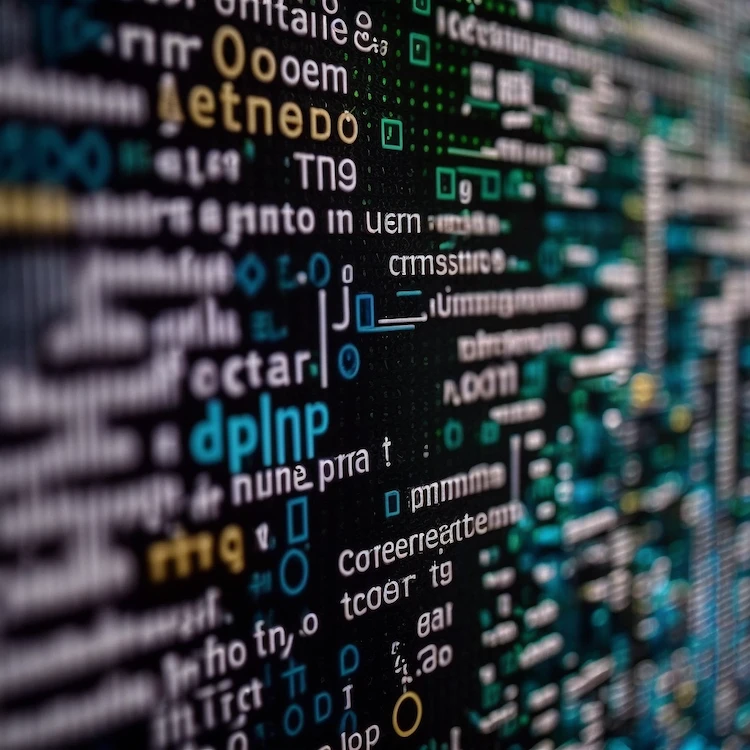
Cardano is a blockchain platform for smart contracts, similar to Ethereum. Cardano’s cryptocurrency is called ADA. Cardano was recognized for its scientific approach to blockchain development and was in the process of fully launching its smart contract capabilities.
Cardano’s blockchain aims to be highly scalable, secure, and sustainable. It uses a unique proof-of-stake consensus algorithm called Ouroboros, which is designed to be energy-efficient and capable of handling a large number of transactions.
Now, let’s consider the application of Cardano to an AI model such as GPT-4. The same general challenges discussed in the previous response apply here:
– Computational Resources: Training an AI model like GPT-4 requires significant computational resources that are currently best provided by centralized high-performance computing infrastructure. Distributing this process over a blockchain network would be a significant technical challenge.
– Data Transfer: Transferring large volumes of training data and model parameters across nodes in a blockchain network could be prohibitive due to bandwidth requirements.
– Security and Privacy: Training data can be sensitive, and distributing it across a blockchain network could raise significant security and privacy concerns.
In terms of serving a pre-trained model like GPT-4, Cardano could potentially be used to create a decentralized application, but this would still be a complex task. The blockchain could be used to handle transactions, such as users paying to use the AI model, and smart contracts could be used to manage access to the model. However, running the model itself would still require significant computational resources, which would likely need to be provided off-chain.

3. Algorand is a blockchain platform that uses a pure proof-of-stake (PPoS) consensus mechanism. Algorand is a scalable, secure, and decentralized digital currency and transactions platform. It’s designed to address some of the technical challenges that have limited the adoption of blockchain technology, such as scalability and security.
Algorand uses a unique consensus mechanism called Pure Proof of Stake (PPoS), which enables high transaction throughput and low latency. This makes it well-suited to applications that require fast, reliable transactions.
Algorand also supports smart contracts and atomic transfers, which are important for developing complex applications. Algorand’s smart contracts run directly on the blockchain, which could potentially provide greater security and reliability compared to platforms where smart contracts run in a separate layer.
Algorand’s governance differs from both Ethereum and Hedera Hashgraph. While Ethereum is a community-driven project with decision-making guided by a decentralized group of developers and other stakeholders, and Hedera Hashgraph is governed by a council of large organizations, Algorand has its own unique approach.
Algorand was founded by Silvio Micali, a Turing Award-winning cryptographer, and its initial development was guided by a small group of scientists and engineers. However, Algorand has taken steps to decentralize its governance. Algorand is implementing a new governance model, where holders of its ALGO cryptocurrency would be able to vote on key decisions about the future of the platform.
This governance model aims to strike a balance between decentralization and efficiency. By giving all ALGO holders a say in governance, it ensures that a wide range of voices can be heard. However, by requiring holders to commit their ALGO to participate in governance, it also provides an incentive for participants to act in the best interests of the platform.
However, the same challenges apply when considering the use of Algorand for training or serving an AI model such as GPT-4
– Computational Resources: Training an AI model like GPT-4 requires significant computational resources, which are currently best provided by dedicated high-performance computing infrastructure. Distributing this process over a network of nodes in the Algorand network would be a major technical challenge.
– Data Transfer: Transferring large volumes of training data and model parameters across nodes in a blockchain network could be prohibitive due to bandwidth requirements.
– Security and Privacy: Training data can be sensitive, and distributing it across a blockchain network could raise significant security and privacy concerns.
In terms of serving a pre-trained AI model, Algorand’s high throughput and low latency could potentially make it well-suited to this task. However, running the model itself would still require significant computational resources, which would likely need to be provided off-chain.
In conclusion, while Algorand’s technology is promising for many types of applications, using it for training or serving an AI model like GPT-4 would still present significant challenges. As with other blockchain platforms, the suitability of Algorand for such an application would depend on the specific requirements of the application and the maturity of Algorand’s ecosystem.
Algorand’s high throughput, low latency, and support for smart contracts could potentially make it suitable for serving a pre-trained AI model. As with other blockchain platforms, the specifics would depend on the requirements of the application and the maturity of Algorand’s ecosystem.
Overall, the choice between Ethereum, Algorand, Hedera Hashgraph, or any other platform would depend on the specific needs of the application, including technical requirements, governance preferences, and the maturity of the platform’s ecosystem.

4. Hedera Hashgraph is a distributed ledger technology (DLT) that uses a unique consensus algorithm based on a directed acyclic graph (DAG) instead of a traditional blockchain. This allows it to achieve high transaction throughput and low latency, making it well-suited for many types of applications. It has a native cryptocurrency called HBAR.
Hedera Hashgraph was praised for its high throughput and low latency, which are crucial for many types of applications. It uses a different approach from traditional blockchain; it uses a directed acyclic graph (DAG) which allows for a high degree of scalability and speed.
AI models like GPT-4, however, require immense computational resources for training. The costs and time associated with training these models is significant even with dedicated, high-performance computing resources. While it might be theoretically possible to distribute the training of such a model across a decentralized network, it would be a significant challenge. The bandwidth required for transferring large volumes of data (both the training data and the model parameters) across nodes could be prohibitive. The computational power of each node in the network would also need to be high enough to handle the intensive calculations involved in training the model.
Additionally, there are concerns related to privacy and security. Training data can be sensitive, and there are strict regulations in many jurisdictions regarding how such data can be used and transferred. These would need to be carefully addressed in a decentralized AI application.
It’s also important to note that training an AI model is only one part of the picture. Once the model is trained, it needs to be served to users, which involves running the model to generate predictions based on user input. This is less computationally intensive than training the model, but still requires significant resources for a large-scale application. Here, the high speed and throughput of Hedera Hashgraph could be advantageous.
Lastly, the usage of any cryptocurrency or DLT for such applications depends on the ecosystem’s maturity, including the availability of libraries, toolkits, and infrastructure for developing and deploying applications. As of May 2023, Ethereum was the leading platform for decentralized applications (dApps), with a large community of developers and a mature ecosystem. However, other platforms like Cardano, Algorand and Hedera Hashgraph were rapidly gaining attention.
While Hedera Hashgraph and its cryptocurrency HBAR could potentially be used to create a decentralized application for serving AI models like GPT-4, using it for training such models in a decentralized manner would be a significant technical challenge. Moreover, legal and privacy issues would also need to be carefully considered. The state of the ecosystem and the specific requirements of the application would also be important factors in choosing the appropriate platform.
In the Hedera Hashgraph network, transactions are spread across the network using a gossip protocol, where each node shares information with other nodes until all nodes have the information. This allows the network to operate efficiently and achieve consensus quickly.
However, using Hedera Hashgraph or any DLT to train or serve an AI model like GPT-4 would face significant challenges:
– Computational Resources: Training an AI model like GPT-4 requires significant computational resources, which are currently best provided by dedicated high-performance computing infrastructure. Distributing this process over a network of nodes, even with efficient communication protocols, would be a significant technical challenge.
– Data Transfer: AI models like GPT-4 and their training data are large, and transferring this data between nodes would require substantial bandwidth. The gossip protocol used by Hedera Hashgraph is efficient for spreading information across the network, but it might still struggle with the volume of data involved in AI training.
– Security and Privacy: AI training data can be sensitive, and distributing it across a network of nodes could raise significant security and privacy concerns. Although Hedera Hashgraph has strong security properties, it’s primarily designed to secure transactions, not sensitive data.
In terms of serving a pre-trained AI model, Hedera Hashgraph’s high transaction throughput and low latency could be beneficial. However, running the model itself would still require substantial computational resources, which would likely need to be provided off-chain.
In conclusion, while Hedera Hashgraph’s unique architecture and consensus algorithm could offer benefits for certain types of applications, using it to train or serve an AI model like GPT-4 would still present substantial technical challenges. The suitability of Hedera Hashgraph for such an application would depend on the specific requirements of the application and the maturity of Hedera Hashgraph’s ecosystem.

On-Chain Governance for AI Safety
Implement on-chain governance mechanisms to maintain control over the AI’s development, ensuring that decisions are made collectively by the community and reflecting a wide range of perspectives. This includes proposal submissions, voting, and funding allocation.
On-chain governance mechanisms provide a powerful tool for maintaining control over AI’s development in a decentralized open-source network. By giving the community the ability to propose, vote on, and fund improvements, we can ensure that AI’s evolution reflects a diverse range of perspectives and serves the best interests of humanity. This inclusive approach fosters collaboration and innovation while safeguarding against potential risks and biases.

AI Ethics and Transparency Framework
Integrate a comprehensive AI ethics and transparency framework into the decentralized AI application to guide its development and ensure adherence to ethical principles, such as fairness, accountability, and transparency.
As AI continues to impact our lives, it is crucial to uphold ethical principles in its design and implementation. Integrating a comprehensive AI ethics and transparency framework into a decentralized AI application built on Cardano, Algorand, Hashgraph and Ethereum, can help ensure that AI services adhere to these principles. This framework guides AI development in a way that safeguards human rights, privacy, and fairness, fostering trust and responsible innovation.

Safety Audits and Certification
Establish a process for safety audits and certification of AI services within the decentralized AI application. This can include reviewing AI models, data sources, and federated learning processes to ensure they meet safety and ethical standards.
To maintain safety and control in the age of AI, it is essential to have robust safety audits and certification processes. By implementing these processes within a decentralized AI application built on Cardano, we can ensure that AI models, data sources, and federated learning processes meet strict safety and ethical standards. This approach promotes responsible AI development and builds confidence in the system’s ability to deliver safe, reliable AI services.

AI Emergency Response Mechanism
Design an AI emergency response mechanism that can quickly detect, assess, and mitigate potential threats arising from the AI’s operation within the decentralized AI application. This can include automated monitoring, alerting, and incident response protocols.
In a world where AI plays an increasingly significant role, having an effective AI emergency response mechanism is vital to ensuring safety and control. By designing such a mechanism within Cardano, Algorand, Hashgraph or Ethereum network based decentralized AI application, we can quickly detect, assess, and mitigate potential threats arising from AI’s operation. This proactive approach enables swift action to protect users and the broader community from potential risks and adverse consequences.
In conclusion, developing responsible practices for AI development and deployment is essential for navigating the AI dilemma. By fostering transparency, ensuring robustness, prioritizing privacy, incorporating ethical considerations, engaging stakeholders, and continuously monitoring and improving AI systems, we can balance innovation and safety in the age of AI. This approach will help ensure that AI technologies are developed and deployed in a manner that benefits humanity while mitigating potential risks and unintended consequences.
IV. The Road Ahead: A Call to Action

The importance of engaging in discussions, research, and coordination to address the AI Dilemma
As we stand on the precipice of the AI revolution, the importance of engaging in earnest discussions, meticulous research, and harmonious coordination to address the AI Dilemma cannot be overstated. This is not a journey to be undertaken by a single entity, but a collaborative expedition, encompassing all stakeholders. Through this concerted effort, we can distill the enormous potential of AI, tempering it with safeguards that ensure its impact is beneficial and resonates with the betterment of humanity.
The AI Dilemma is a complex puzzle, the pieces of which are scattered across diverse domains. The key to its resolution lies in facilitating dialogue that is as open as it is inclusive. Stakeholders, including AI developers, policymakers, researchers, ethicists, and end-users, all have a voice in this discourse. The diverse perspectives they bring to the table help us understand the multi-dimensional challenges, ultimately enabling us to build a comprehensive strategy and craft informed policies that govern AI technologies.
However, dialogue alone won’t suffice. The AI Dilemma blurs the lines between technical and non-technical spheres, reaching into the realms of ethics, society, economics, and politics. It is here that interdisciplinary research plays a pivotal role, providing invaluable insights that inform the development of responsible practices and policies.
Furthermore, we can’t ignore the role of the public, the ultimate recipient of AI’s influence. Public awareness and education about AI and its societal implications are essential. By demystifying AI, we empower individuals to actively participate in decision-making processes, fostering a sense of collective responsibility. This can be achieved through outreach campaigns, educational initiatives, and resources that make AI more accessible and understandable.
Simultaneously, policy coordination and harmonization are crucial for establishing a globally consistent framework for AI development and deployment. By fostering international cooperation, we ensure that AI technologies are governed responsibly across jurisdictions, creating a unified front against potential risks.
The private sector, with its major influence on AI’s development and deployment, must also be part of our collective journey. Engaging with industry stakeholders, advocating for responsible corporate practices, and encouraging public-private partnerships can align interests, ensuring that AI’s evolution prioritizes safety, ethics, and societal wellbeing.
Lastly, in the face of the global nature of the AI Dilemma, international cooperation becomes indispensable. Sharing expertise, resources, and best practices across borders helps us develop joint strategies to address common challenges, maximizing AI’s potential for global good.
In summary, addressing the AI Dilemma is a shared responsibility, demanding our collective engagement in discussions, research, and coordination. Through open dialogue, interdisciplinary research, public awareness, policy coordination, private sector engagement, and international cooperation, we can ensure that the development and deployment of AI technologies are guided by ethical, safety, and societal considerations. This collective effort is the compass that will guide us in harnessing the benefits of AI while mitigating potential risks and unintended consequences.

B. The need for diverse perspectives and a comprehensive approach to AI safety and regulation
Navigating the intricate labyrinth of the AI Dilemma calls for a tapestry of diverse perspectives, woven together with a comprehensive approach to AI safety and regulation. The symphony of AI’s potential can only be fully realized when every voice, every perspective is given the platform to resonate.
AI’s profound influence reaches into every corner of our global society. Thus, our decision-making processes and strategies should echo the voices of all stakeholders—developers, policymakers, researchers, ethicists, and end-users alike. This shared representation is the bedrock upon which we can build a balanced and robust approach to tackle the AI Dilemma.
Yet, diversity must not merely be a check-box exercise; it must be underpinned by the principles of inclusivity and social equity. Our strategies should be infused with active participation and input from underrepresented groups, ensuring that the design and implementation of AI technologies do not perpetuate existing inequalities or breed new ones.
The labyrinth of AI extends beyond the confines of technology, reaching into the realms of ethics, social science, law, and public policy. Tackling this complexity requires a collective effort, a multidisciplinary collaboration that allows us to understand the multifaceted risks and opportunities of AI. This holistic understanding forms the foundation for comprehensive safety and regulatory frameworks, guiding us towards responsible and ethical AI deployment.
As we navigate through this labyrinth, we must not lose sight of the ethical considerations that AI technologies bring forth, such as bias, fairness, transparency, and accountability. Incorporating ethical principles and guidelines into the very fabric of AI development, coupled with regulatory mechanisms to ensure adherence, can help us address these concerns effectively.
Simultaneously, our approach must have safety and security at its heart. As AI technologies integrate deeper into our society, robust safety measures and regulations to ensure accountability become paramount. Implementing these, along with strategies to mitigate potential risks, can ensure the secure operation of AI systems.
However, in this rapidly evolving landscape of AI, our regulatory frameworks must be as dynamic and adaptable as the technology they govern. This demands continuous monitoring and assessment of the AI landscape, coupled with the agility to revise regulations to address emerging challenges.
In essence, tackling the AI Dilemma is akin to orchestrating a symphony with diverse perspectives, underpinned by a comprehensive approach to AI safety and regulation. By giving a platform to every voice, fostering inclusivity, encouraging multidisciplinary collaboration, addressing ethical considerations, prioritizing safety, and developing adaptable regulations, we can chart a course through the AI landscape. This symphony, resonating with shared responsibility, can guide us towards a future where AI technology harmoniously serves the greater good of humanity.

C. The potential for AI to contribute to medical discoveries, environmental solutions, and societal advancements
The dawn of AI ushers in a realm of possibilities, a horizon unmarred by the constraints of traditional boundaries. This brilliant landscape brims with the promise of advancing medical science, crafting sustainable environmental solutions, and fostering societal progress. By sailing this sea of AI responsibly, we find ourselves on the cusp of addressing some of humanity’s most pressing conundrums.
Imagine a world where the labyrinth of medical research is illuminated by the beacon of AI. Where diagnostics are not a lengthy game of guesswork, but a swift and accurate journey to understanding. Where treatment plans are not standardized, but personalized to the unique needs of each individual. This is the promise of AI in healthcare – unraveling patterns in vast data oceans, accelerating the discovery of new therapies, drugs, and biomarkers, and equipping healthcare professionals with powerful tools to make informed decisions and improve patient outcomes.
Picture a world where AI is the vanguard of our battle against climate change, the architect of sustainable development. Imagine harnessing the power of AI to optimize energy consumption, to keep a vigilant watch over pollution levels, to predict and prepare for natural disasters. Envision a circular economy where AI guides waste management and recycling initiatives, promoting responsible resource use.
Visualize a society where AI is the cornerstone of equitable growth, the catalyst for societal advancements. From transforming education and broadening access to information, to bolstering public safety and refining crisis response, AI holds the potential to enhance the quality of life globally. Yet, this potential must be guided by ethical considerations and a commitment to bridging the digital divide, ensuring that AI-driven advancements are inclusive and do not widen existing inequalities.
Now, think of a world where AI fuels the engine of scientific research and innovation, automating complex tasks and illuminating patterns in vast datasets that may have otherwise remained obscured. This could spur breakthroughs across diverse fields, from physics and materials science to astronomy and climate modeling, ultimately driving human progress.
Finally, as our world grapples with increasingly intricate challenges, AI can be the beacon guiding our path towards collaborative problem-solving and global coordination. With its capacity to process and analyze monumental amounts of data, AI can identify trends on a global scale, fostering effective cooperation and informed decision-making among nations, organizations, and communities.
As we stand on this precipice of technological evolution, we must remember that the potential of AI to revolutionize our world is immense. By tackling the AI Dilemma head-on and cultivating responsible practices for AI development and deployment, we can harness this power to foster a brighter, more equitable future, enhancing the human condition and carving a path towards progress that benefits us all.

Conclusion:
As we draw the curtains on our quest through the enigmatic landscape of the AI Dilemma, we stand on the brink of an era laden with vast opportunities intertwined with formidable challenges. This journey has taken us through the winding expanses of AI’s expanding influence, the imposing cliff faces of potential risks, and the competitive peaks and valleys between nations in the race for AI supremacy.

We’ve gleaned lessons from the past, drawing parallels from the rapid and far-reaching adoption of social media, reminding us of the need for proactive measures to temper the might of AI. Through these pages, we’ve charted a course teeming with solutions and strategies, a path that calls for unity, respect for diversity, and a comprehensive approach to the all-important quest for AI safety and regulation.

In the face of the AI Dilemma, we’re compelled to prioritize the intertwining of ethics and transparency into the very fabric of AI development and deployment. The lessons etched into our collective memory serve as guideposts, reminding us of the importance of creating a future for AI that is rooted in human values and the preservation of rights and well-being.

As we emerge from this expedition, equipped with a deeper comprehension of the AI Dilemma and its far-reaching implications, we are reminded of our shared responsibility. A responsibility to ensure that the reins of AI are held firmly in the hands of humanity, steering us towards advancements in healthcare, the creation of sustainable environmental solutions, and the promotion of societal equality.

Armed with this wealth of knowledge and the strategic roadmap we’ve meticulously crafted, we are poised to journey towards a future where AI is wielded with responsibility, ethics, and equity. By engaging in continuous dialogue, pursuing relentless research, and fostering global coordination, we can work in unison to navigate the complex tapestry of the AI Dilemma.

Our mission is to unlock the bountiful potential of AI, and in doing so, sculpt a world where AI is a beacon of progress and a guardian of our values, serving all of humanity in this exciting new age. It is our collective challenge and our shared opportunity – to master the AI Dilemma and to harness AI’s potential to shape a future that benefits us all.

Inspiration:
Drawing inspiration from the compelling narrative of the YouTube video “The A.I. Dilemma” by the Center for Humane Technology and the relentless spirit embodied in “Top Gun: Maverick,” this document presents a call to arms.

Every developer, every participant in the AI landscape, is urged to not only understand but also harness and guide the power of AI for the benefit of their communities and society as a whole.

The power of AI, symbolized by iconic representations such as Cyberdine Systems, HAL 9000, the Borg Queen, Commander Data, and the Enterprise-D mainframe, should not be monopolized by any single class, group, or entity. Rather, it should be judiciously harnessed and directed by those who understand its intricacies and potential, spanning a broad spectrum of society from the working class, middle class, academic class, applied STEM professional class, to the intellectual class of researchers, ethicists, philosophers, and historians.

Moreover, the influence of AI extends beyond these groups. The guardians and warrior class spiritual rulers and defenders, the professional defense departments, and the administrative state must also play a role in managing this transformative power. No group should stand alone in this endeavor, underscoring the necessity for robust collaborations and the design of well balanced and non-corruptible multi-dimensional and multi-party governance frameworks.

The role of tech professionals, specifically computer scientists, software engineers, and STEM professionals, is paramount. Not only do they navigate the intricacies of system design, management, and development, but they must also actively participate in shaping governance system design, based on mathematical principles and a hierarchy of trust, responsibility, earned accountability, competence and cryptography. By doing so, they can ensure the integration of AI into our societies is done safely, responsibly, and ethically.

In conclusion, the governance and control of AI should not be a power game, but a shared responsibility involving diverse groups, each with unique expertise. By recognizing and embracing this shared responsibility, we can effectively navigate the AI Dilemma, unlocking the transformative potential of AI for the betterment of all. Let us strive for a future where AI uplifts society, enhancing resilience, survivability, and capability for everyone, rather than dominating it.

Now, let the stirring strains of “Top Gun: Maverick – Ultimate Soundtrack Suite” accompany your journey through this document.

Let it resonate with your soul, echoing our collective determination to surmount challenges and navigate the intricate landscape of AI.

YouTube Video Clip Title: “MicroStrategy is using Bitcoin cryptography to counter these AI threats – Michael Saylor (Pt. 3/3)”
SGT Analysis: “In an age characterized by rapid technological advancement, particularly in artificial intelligence (AI), blockchain technology, and cybersecurity, novel threats to our digital world continue to emerge. Michael Saylor, a thought leader in this space, articulates a compelling case for harnessing Bitcoin’s blockchain and cryptography to counter these challenges. Following his key arguments and supplementing them with our knowledge of STEM fields, we can construct a well-structured argument.“
- AI and the Threat to Digital Identity: “With the rapid development of AI technologies, the capacity for misinformation, deception, and identity manipulation has expanded dramatically. AI bots can fabricate personas, create misleading narratives, and even produce convincing deepfakes. This represents a significant threat to the integrity of digital communications and the security of online identities. Furthermore, these threats could amplify social and political divisions by propagating false information unimpeded.“
- The Need for a Secure Digital Identity Solution: “The situation described above underscores the urgent need for a system that can verify digital identities reliably. One promising approach, as suggested by Saylor, involves integrating Bitcoin’s cryptographic security with enterprise security mechanisms. The public-private key identity pair recorded on the Bitcoin blockchain would serve as a verifiable “orange check” on digital identities. This would introduce a thermodynamic cost, deter fraudulent account creation, and add a layer of cryptographic verification in cyberspace.“
- Blockchain’s Security Potential: “Bitcoin’s security potential stems from its decentralized nature and the significant computational power needed to maintain the network. This decentralized system, devoid of a single point of failure, combined with Bitcoin’s robust cryptographic algorithms, provides a defense mechanism against AI threats. The concept of using blockchain’s immutability to store sensitive documents also extends its applicability, creating tamper-proof records that could stand the test of time.“
- Enhancing Scalability and Speed with Layer 2 and Layer 3 Solutions: “Despite the potential benefits of blockchain, some critics highlight Bitcoin’s relatively high transaction costs and slower speeds. However, this criticism encourages the development of Layer 2 and Layer 3 solutions that build upon the base blockchain protocol. These solutions, like the Lightning Network, aim to make transactions faster and cheaper, addressing one of the key limitations of the current Bitcoin network.“
“In conclusion, the integration of Bitcoin’s blockchain and cryptography into digital identity verification, corporate security, and even new digital applications presents a compelling approach to counter AI threats and foster a more secure, efficient, and engaging digital environment. In a world increasingly vulnerable to AI-driven threats, such a cryptographic solution could be a crucial defense mechanism.“
SGT Comment: “Thank you, Michael Saylor, for your insightful discussion about the importance of Bitcoin cryptography and blockchain technologies to counter AI threats. Your perspective aligns with our recent report titled “Navigating the AI Dilemma: Balancing Innovation and Safety in the Age of AI”, where we began an analysis on emerging threats and potential defenses in our rapidly advancing digital world.”
Navigating the AI Dilemma: Balancing Innovation and Safety in the Age of AI
“In the report, we echo your sentiments about the potential of Bitcoin’s blockchain technology to counter AI threats and foster a more secure digital environment. We believe that a robust cryptographic solution like the one you proposed could indeed be a crucial defense mechanism in a world increasingly vulnerable to AI-driven threats. Kindly consider to make more videos as a tech visionary in the interdisciplinary domain of AI & Open Source Blockchain Development, and perhaps this will continually inspire Charles Hoskinson to work indefinitely in software development, 🙂 and we can just be tech visionaries. 🙂“
SGT Analysis: “The video featuring Charles Hoskinson encompasses several key themes related to artificial intelligence (AI), cybersecurity, and network issues. These can be synthesized as follows:“
- Deep Fakes and AI: “Charles expresses a strong concern about the increasing sophistication of deep fake technology, which is powered by AI. He suggests that the imminent indistinguishability of such fakes from real footage or audio could lead to serious issues of misinformation and manipulation on a large scale. In an era where AI can generate convincing fake media, discerning the truth becomes more complex and could potentially destabilize societies and politics.”
- The Role of Blockchain: “To counteract the potential harm of deep fakes, Charles proposes the use of blockchain technology for verification purposes. Blockchain’s immutable and transparent nature could provide a reliable method to confirm the authenticity of digital content. This could involve signing and verifying content with non-fungible tokens (NFTs) at the point of creation, which would serve as a kind of digital fingerprint to prove legitimacy. However, this could also introduce new complexities such as managing privacy and scalability on the blockchain.”
- Changing Social Contracts in Cybersecurity: “Charles criticizes recent changes in Ledger’s handling of private keys, suggesting they breach a previously established “social contract” that emphasized user control and security. This, in essence, represents a cybersecurity issue, where the shifting tactics could potentially expose users to increased risks, especially if decryption keys for recovery purposes were to be compromised. Charles suggests that technologies, including AI (specifically referring to ChatGPT), could potentially exploit such vulnerabilities.”
- AI and Blockchain Interactions: “On a broader level, Charles believes that AI and blockchain could work in tandem to automate processes while ensuring secure and proper data handling. This would require careful design to prevent misuse, but if implemented correctly, it could dramatically increase efficiency and security in many sectors, including healthcare. Nonetheless, this raises issues about data privacy and the potential risk of AI systems being misused or exploited.”
“In conclusion, the issues raised by Charles Hoskinson touch upon the complex interplay of AI, cybersecurity, and blockchain. While AI presents significant potential, it also brings new challenges that need to be addressed, particularly in the realm of deep fakes and security. Blockchain offers potential solutions but also introduces new complications and potential vulnerabilities. It’s clear that balancing the advancement of these technologies with maintaining security, privacy, and trust will be an ongoing challenge.“
SGT Comment: “Hey Charles Hoskinson, you are our hero! Cheers for the enlightening chat on blockchain and AI! It’s like you, Michael Saylor, and I are forming a tech-trinity here. 🙂 Saylor’s been all jazzed up about Bitcoin cryptography and blockchain to face-off AI threats. We got so pumped up, we incorporated his recent AI video and yours into our hot-off-the-press AI Safety article titled“
‘Navigating the AI Dilemma: Balancing Innovation and Safety in the Age of AI’. “Give it a look-see at, and feel free to add the technical component required to have a technical report :). JK” https://skillsgaptrainer.com/navigating-the-ai-dilemma/
“Now, Saylor’s betting his chips on Bitcoin’s blockchain technology as our knight in shining armour against AI domination – imagine it as Batman’s or Iron-Man’s gadget suit of armour, but for our pixel-powered world!”
“MicroStrategy is using Bitcoin cryptography to counter these AI threats – Michael Saylor (Pt. 3/3) “https://youtu.be/BFCnA5OjrEE
“Or wait, could Cardano be the guardian of digital systems in this AI epoch? Perhaps empowering those who hold, well, not fancy ledger wallets :), but those precious private keys!
Charles, mate, you just keep building those software castles. It looks like with the AI exponential rocket taking off, you’ve got exponential amount of software development work cut out for you – constructing safeguards against the potential AI mischief across the web. Aren’t you lucky to have such a bursting-to-seams workload of safeguarding the ENTIRE internet of applications and protocols? 🙂
As for Michael Saylor and yours truly, we’ll stick to our day jobs as tech prophets for the time being. Thumbs-up on the good work! Thank god someone out there is developing these systems.”
Related books and resources:
“Weapons of Math Destruction” by Cathy O’Neil: This book explores how algorithms and big data can reinforce inequality and social injustice, providing a cautionary look at the dark side of mathematical modeling and its impact on society.
“Life 3.0: Being Human in the Age of Artificial Intelligence” by Max Tegmark: Tegmark examines the future of AI and its effects on the human condition, posing critical questions about consciousness, ethics, and a world where machines surpass human intelligence.
“The Master Algorithm: How the Quest for the Ultimate Learning Machine Will Remake Our World” by Pedro Domingos: This book delves into machine learning and the quest for a ‘master algorithm’ that could solve all problems through data understanding.
“AI Superpowers: China, Silicon Valley, and the New World Order” by Kai-Fu Lee: Lee contrasts the AI strategies and advancements of China and the United States, offering insights into the global competition and collaboration in AI development.
“Superintelligence: Paths, Dangers, Strategies” by Nick Bostrom: Bostrom discusses the potential futures associated with superintelligent AI systems, including ethical dilemmas and risk management strategies.
“Human Compatible: Artificial Intelligence and the Problem of Control” by Stuart Russell: This book presents a new framework for thinking about AI and ensuring that machines’ goals remain aligned with human values.
“The Age of Surveillance Capitalism: The Fight for a Human Future at the New Frontier of Power” by Shoshana Zuboff: Zuboff examines how tech companies exploit personal data and the implications for individual freedom and democracy.
“The Future of Humanity: Terraforming Mars, Interstellar Travel, Immortality, and Our Destiny Beyond Earth” by Michio Kaku: While not solely focused on AI, this book provides a broader context for technological advancements and their potential to shape humanity’s future.
“New Laws of Robotics: Defending Human Expertise in the Age of AI” by Frank Pasquale: This work proposes new laws for robotics and AI, emphasizing the protection of human skills and decision-making.
“Hello World: Being Human in the Age of Algorithms” by Hannah Fry: Fry explores the real-world impact of algorithms and AI on daily life, discussing both the benefits and drawbacks of our increasingly data-driven world.
To see our Donate Page, click https://skillsgaptrainer.com/donate
To see our Instagram Channel, click https://www.instagram.com/skillsgaptrainer/
To see some of our Udemy Courses, click SGT Udemy Page
To see our YouTube Channel, click https://www.youtube.com/@skillsgaptrainer

